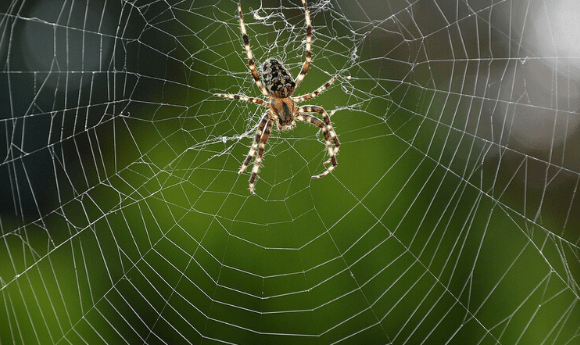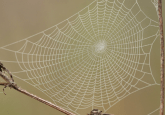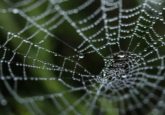Unraveling the tangled web of spider silk protein dynamics

An interdisciplinary study has described the protein dynamics behind the strength and flexibility of spider silk.
Spiders use their silk for multiple purposes, such as creating structures for shelter and to catch prey. The silk consists of protein fibers that are stored in a specialized gland on the spider’s abdomen. As the fibers are extruded, they are exposed to multiple chemical and mechanical factors leading to the formation of silk. Spider silk is a much-studied biomaterial and its material toughness, incredible tensile strength and low weight give it many potential real-world applications, for example in ballistics armor. Despite much being known about the formation of the silk, the protein dynamics and molecular make-up of the material remained unclear.
In a recent collaboration study, researchers from Johannes Gutenberg University of Mainz (JGU; Germany) and the Julius Maximilian University of Würzburg (JMU; Germany) have characterized the amino acid content and structure of spider silk proteins.
It was hypothesized that the fiber-forming proteins contained high levels of leucine, known for its structural stability; however, the team was surprised to discover that methionine was the most abundant amino acid in the silk proteins.
“It was this abundance of methionine in the spider silk protein that made us take a closer look at its dynamics,” explained study author Ute Hellmich (JGU).
Researchers at JMU synthesized silk proteins in which the endogenous methionine was replaced with leucine. PET fluorescence correlation spectroscopy and NMR spectroscopy were then utilized to compare the folding, stability and dynamics of the protein variants in relation to regular spider silk.
- Spider-silk producing bacteria
- Would spider-man make a good stem cell biologist?
- Making proteins the spider silk way
“We found that substituting methionine with leucine has no effect on the spider silk protein structure. In fact, both proteins look exactly the same. At the same time, however, the natural methionine-containing protein binds much more strongly to other spider silk proteins. The leucine-containing protein we synthesized in the lab largely loses this ability to form such stable links,” commented principal author Benedikt Goretzki (JGU).
The two research groups concluded that the methionine found in silk protein is responsible for the flexibility of the protein structure and that its flexibility is responsible for the close interactions of individual silk proteins.
“Methionine not only makes the protein more dynamic, it also improves its functionality. In effect, it enables two proteins to specifically interlink with each other, which would otherwise be impossible, even if they had the same structure,” explained the study’s second principal author Julia Heiby (JMU).
These findings suggest it may be possible to modify the properties of spider silk proteins by substituting amino acids, allowing for the creation of biomaterials with increased stability. The team hopes to be able to provide a greater insight into protein dynamics and their related biological function in the near future.


